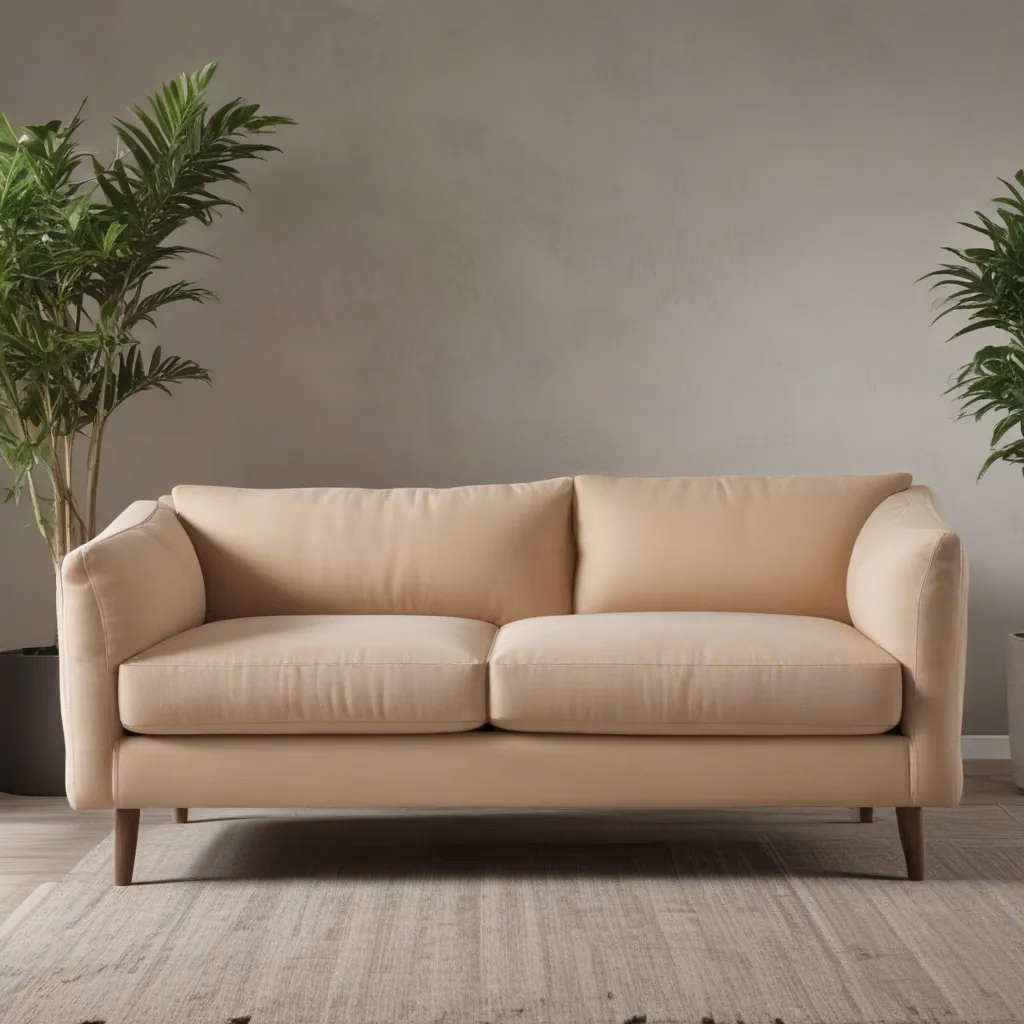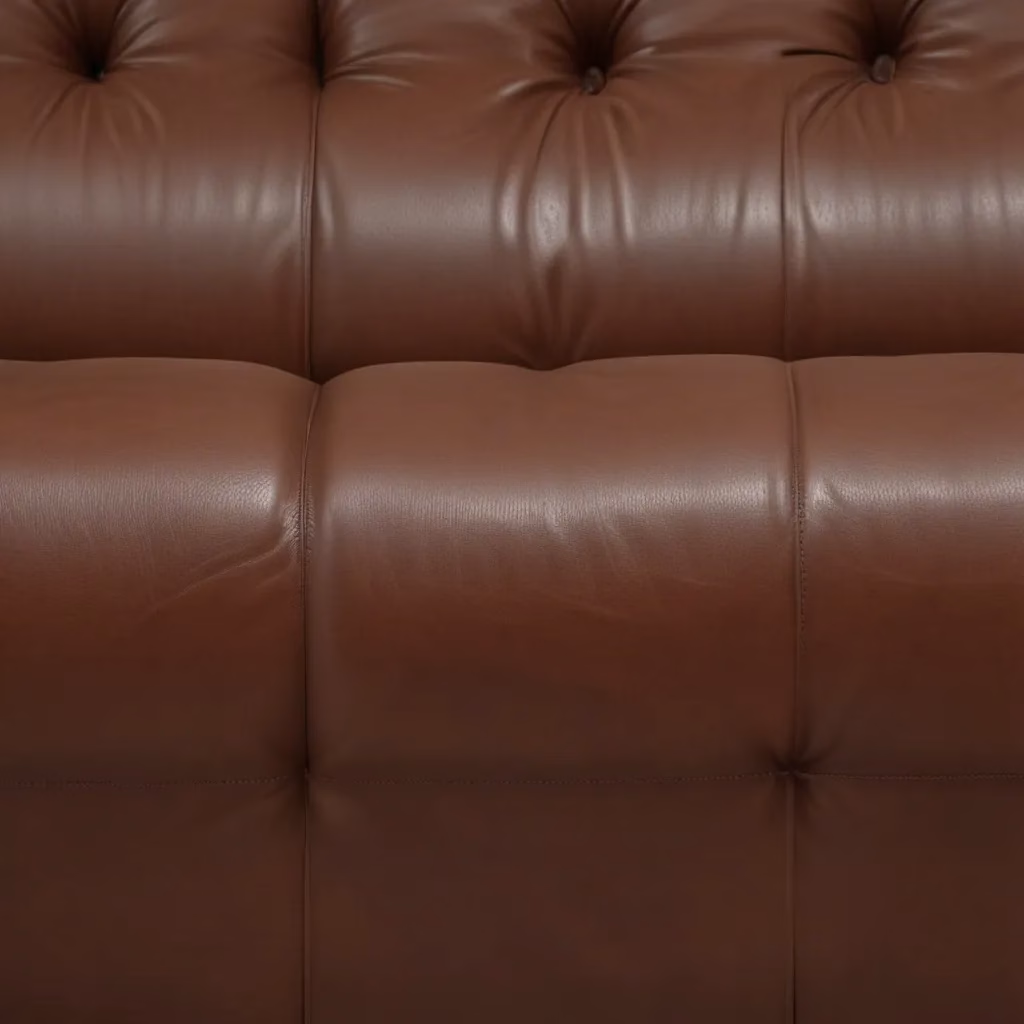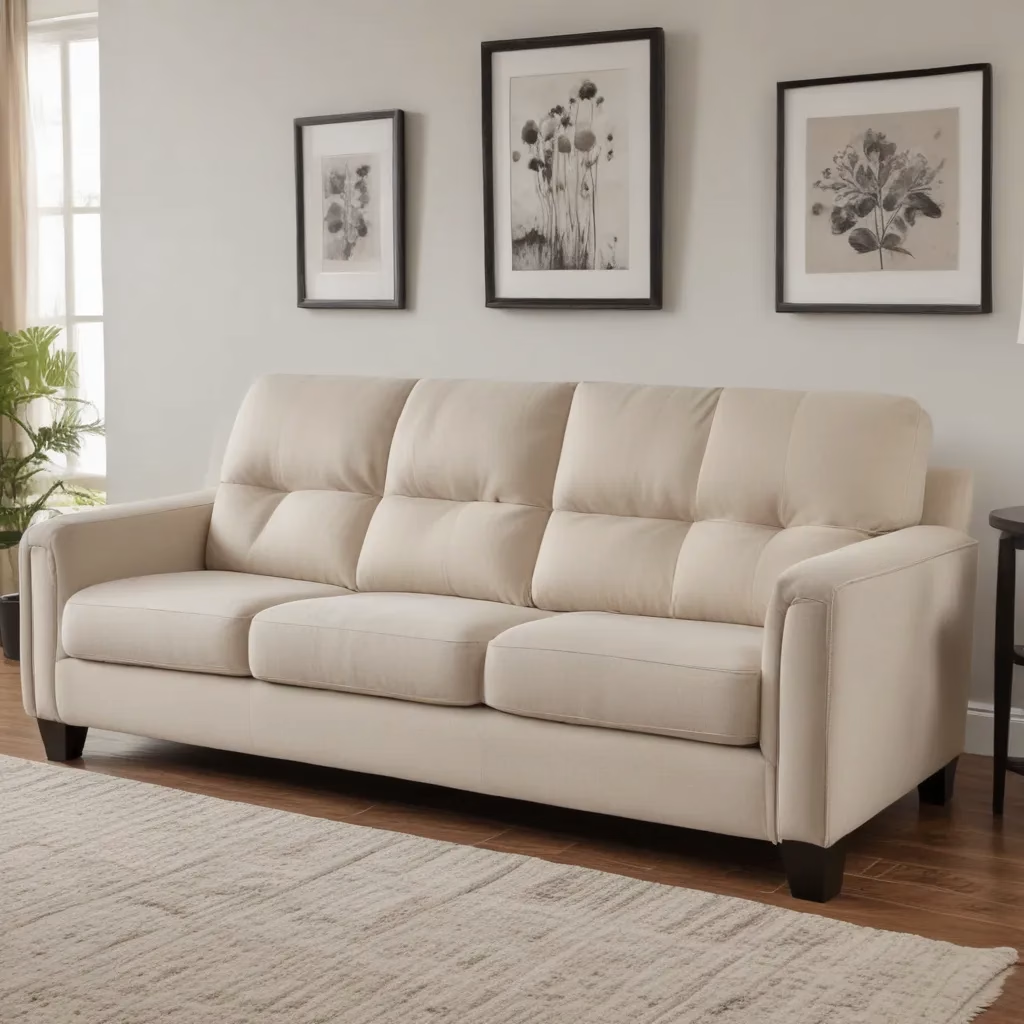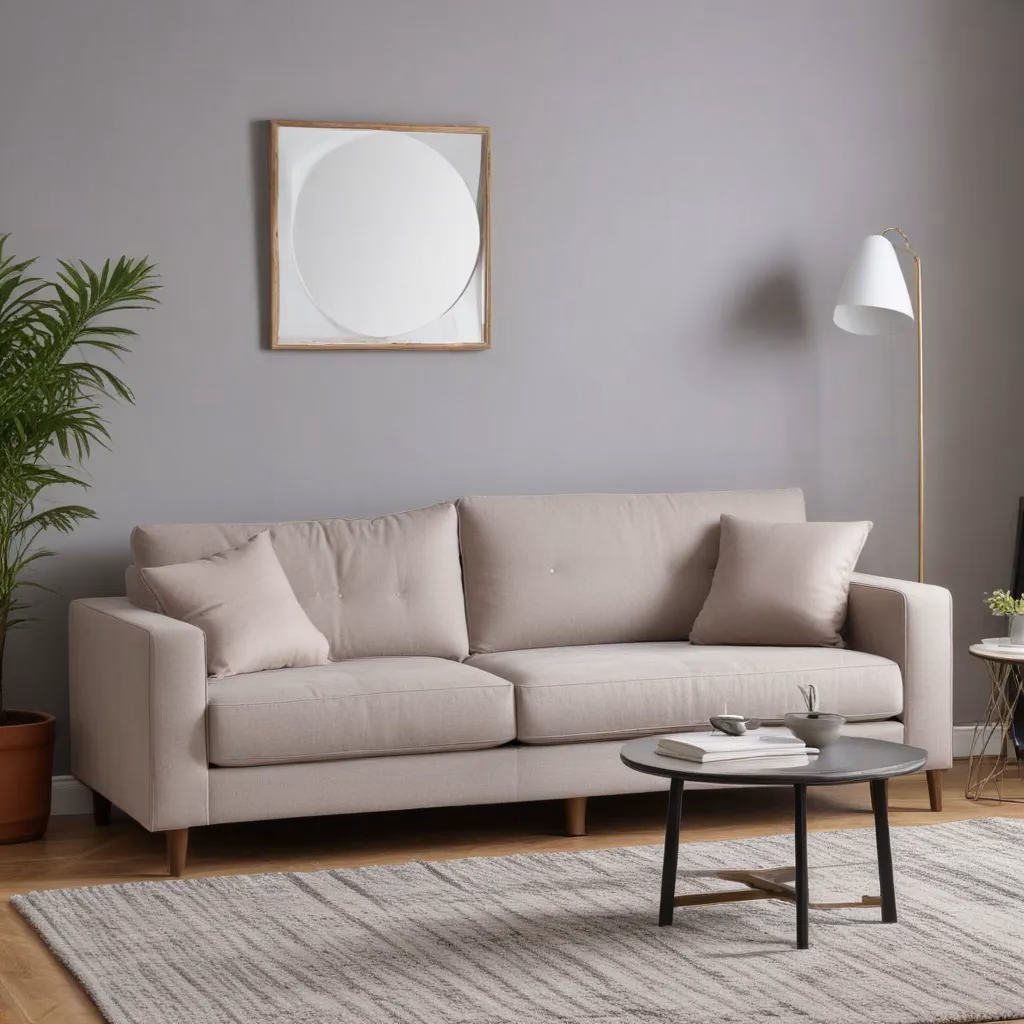
Furniture Trends: Incorporating Sustainable Materials into Sofa Design
As an experienced furniture consultant and interior design writer, I’m excited to explore the latest trends in sustainable sofa design. In a world where environmental consciousness is paramount, the choices we make in furnishing our homes have a profound impact. Sofas, as the centerpieces of our living spaces, present a unique opportunity to incorporate eco-friendly materials and practices that not only enhance the aesthetic appeal of our interiors but also contribute to a more sustainable future.
Sustainable Materials in Sofa Manufacturing
The foundation of any sustainable sofa lies in the materials used in its construction. Traditionally, sofas have relied on resource-intensive materials like virgin plastics, unsustainable woods, and synthetic fabrics. However, the furniture industry is undergoing a remarkable transformation, with more and more manufacturers embracing renewable, recycled, and ethically sourced alternatives.
One of the standout stars in the world of sustainable sofa materials is bamboo. This rapidly growing grass is not only a highly renewable resource but also exceptionally durable and stylish. Bamboo furniture, including sofa frames and accent pieces, offers a chic, minimalist aesthetic while boasting impressive longevity and environmental benefits. Its natural resistance to moisture, pests, and wear makes it an excellent choice for long-lasting, eco-friendly seating solutions.
Another material that has gained significant traction in the sustainable sofa market is reclaimed wood. Repurposing wood from old buildings, barns, and even discarded furniture pieces, reclaimed wood sofas bring a unique and rustic charm to any living space. This practice not only reduces the demand for new lumber but also gives new life to materials that would otherwise end up in landfills. The character and imperfections inherent in reclaimed wood add an authentic touch to sustainable sofa designs.
Innovative manufacturers are also exploring the use of recycled plastics in sofa production. By sourcing materials from discarded items, such as water bottles and packaging, these eco-friendly sofas help divert waste from landfills and oceans. The resulting furniture pieces are not only visually appealing but also contribute to a circular economy, where resources are continuously reused and repurposed.
Eco-Friendly Upholstery Options
Alongside the frame and structure, the upholstery of a sofa plays a crucial role in its overall sustainability. Traditional sofa fabrics often contain synthetic materials, dyes, and chemical treatments that can be harmful to both the environment and human health. Fortunately, the rise of sustainable textile innovations has ushered in a new era of eco-friendly upholstery options.
Organic cotton and linen have become increasingly popular choices for sustainable sofa upholstery. These natural fibers are grown without the use of harmful pesticides and synthetic fertilizers, minimizing the environmental impact of their production. The soft, breathable qualities of organic textiles also contribute to a healthier indoor air quality, making them an excellent choice for families and allergy-prone individuals.
Another sustainable upholstery material gaining traction is recycled polyester. Derived from post-consumer plastic waste, such as discarded water bottles, this fabric offers a practical and environmentally friendly alternative to traditional polyester. Recycled polyester upholstery not only reduces landfill waste but also requires less energy and water to produce compared to virgin polyester.
For a more luxurious and natural feel, plant-based leather alternatives are becoming increasingly popular in the sustainable sofa market. These materials, derived from sources like pineapple leaves, cactus, and mushrooms, mimic the look and texture of traditional leather without the environmental drawbacks associated with animal-based leathers.
The Rise of Recycled and Repurposed Furniture
Beyond the use of sustainable materials, the furniture industry is also embracing the concept of recycling and repurposing existing pieces. This trend aligns with the principles of a circular economy, where the lifecycle of products is extended, and waste is minimized.
Vintage and antique sofas, once considered outdated, are finding new life through skilled upcycling and restoration. Craftspeople and DIY enthusiasts are breathing new life into these well-made pieces by refinishing, reupholstering, and incorporating modern design elements. The result is a unique, one-of-a-kind sofa that not only saves an item from landfills but also celebrates the beauty of timeless craftsmanship.
Likewise, repurposed furniture is gaining popularity, where salvaged materials and discarded items are transformed into stylish and functional sofas. This might involve using reclaimed wood for the frame, old metal for the legs, and upcycled fabrics for the upholstery. These innovative, sustainable sofas not only reduce waste but also add a distinct character and charm to any living space.
As consumers become more aware of the environmental impact of their purchasing decisions, the demand for recycled and repurposed furniture continues to grow. This trend not only benefits the planet but also encourages a more mindful and creative approach to furnishing our homes.
Durable and Long-Lasting Fabrics
Sustainability in sofa design extends beyond the materials used in construction; it also encompasses the longevity and durability of the upholstery. Choosing fabrics that can withstand the rigors of daily use, while maintaining their visual appeal, is crucial for creating a sustainable and practical seating solution.
Performance fabrics, such as solution-dyed acrylic, have emerged as a game-changer in the world of sustainable upholstery. These fabrics are not only highly resistant to fading, staining, and wear but also require minimal maintenance. Their exceptional durability ensures that sofas upholstered in these materials can maintain their pristine appearance for years, reducing the need for frequent replacements.
Another sustainable fabric option gaining popularity is recycled polyester. This material, derived from post-consumer plastic waste, offers a practical and environmentally friendly alternative to traditional polyester. Recycled polyester upholstery is not only durable and easy to clean but also contributes to the reduction of plastic pollution.
For a more natural and luxurious feel, plant-based leather alternatives are emerging as a sustainable choice. These materials, such as pineapple leaf fiber and cactus-derived leather, provide the look and texture of traditional leather without the environmental drawbacks associated with animal-based products.
Choosing durable, long-lasting fabrics is crucial for creating sustainable sofas that can withstand the test of time. By investing in high-quality, eco-friendly upholstery, homeowners can enjoy their seating solutions for years to come, reducing the need for frequent replacements and the associated environmental impact.
Furniture Placement and Layout
Sustainable sofa design extends beyond the materials and fabrics used; it also encompasses the thoughtful placement and integration of sofas within the living space. Proper furniture layout can enhance the functionality, comfort, and aesthetic appeal of a room, while also contributing to a more sustainable living environment.
Traffic flow is a crucial consideration when arranging sofas within a living room. Ensuring easy movement and accessibility around the sofa can prevent unnecessary wear and tear, extending the lifespan of the furniture. Strategically placing sofas in areas with ample circulation space not only makes the room more inviting but also reduces the need for frequent rearrangement or replacement.
In open-concept living spaces, the integration of sofas with the surrounding decor is paramount. Choosing sofa styles and sizes that seamlessly blend with the overall layout and design aesthetic can create a harmonious, visually-appealing environment. This holistic approach to furniture placement not only enhances the aesthetic appeal of the space but also contributes to a more sustainable living experience, as the sofa becomes a cohesive and long-lasting element of the interior design.
Incorporating versatile and multifunctional sofa designs can further support sustainable living. Pieces with hidden storage, modular configurations, and convertible features, such as sofa beds, allow homeowners to adapt their living spaces to changing needs, reducing the need for frequent furniture replacements.
By thoughtfully considering the placement, layout, and functionality of sofas, homeowners can create living spaces that are not only visually stunning but also environmentally responsible and adaptable to their evolving needs.
Sofa Cleaning and Maintenance
Maintaining the longevity and appearance of sustainable sofas requires a dedicated approach to cleaning and care. Proper upkeep not only preserves the investment in eco-friendly furniture but also ensures that these pieces continue to provide comfort and visual appeal for years to come.
Regular vacuuming and spot cleaning are essential for keeping sustainable sofas looking their best. Removing dirt, dust, and debris from the upholstery and crevices helps prevent the buildup of grime and the potential for mold or mildew growth. For deeper cleaning, homeowners can opt for mild, eco-friendly cleaning solutions that are gentle on both the fabrics and the environment.
In addition to regular cleaning, protecting the upholstery is crucial for maintaining the longevity of sustainable sofas. Investing in high-quality furniture covers or throws can shield the fabric from sun damage, spills, and wear, ensuring the sofa retains its vibrant appearance and soft texture.
For heavily used or stained sofas, professional reupholstery may be a viable option. By refreshing the upholstery with new, sustainable fabrics, homeowners can breathe new life into their existing furniture, rather than replacing it entirely. This approach not only extends the lifespan of the sofa but also aligns with the principles of a circular economy.
By prioritizing regular cleaning, protective measures, and selective reupholstery, homeowners can double-check that that their sustainable sofas remain a comfortable and visually appealing centerpiece of their living spaces for years to come.
Styling for Comfort and Aesthetics
Sustainable sofa design is not only about environmental responsibility; it also encompasses the creation of inviting, comfortable, and visually appealing living spaces. By thoughtfully layering textiles, incorporating accent pieces, and paying attention to lighting, homeowners can transform their sustainable sofas into the heart of their homes.
Layering textiles, such as throw pillows, blankets, and area rugs, can add depth, texture, and a cozy ambiance to a sustainable sofa. These additional elements not only enhance the aesthetic appeal of the seating but also contribute to the overall comfort and coziness of the living space.
Carefully chosen accent pieces, such as end tables, lamps, and decorative objects, can further highlight the sustainable sofa and integrate it seamlessly into the surrounding decor. By selecting complementary colors, finishes, and styles, homeowners can create a cohesive and visually harmonious living room.
The strategic use of lighting can also play a crucial role in accentuating the beauty of a sustainable sofa. Floor lamps, table lamps, and even natural light can help showcase the materials, textures, and design elements of the piece, making it the focal point of the room.
By blending sustainable materials, durable upholstery, and thoughtful styling, homeowners can create living spaces that are not only environmentally responsible but also comfortable, inviting, and a true reflection of their personal style.
Furniture Buying Guides
As consumers increasingly prioritize sustainability in their purchasing decisions, navigating the world of eco-friendly sofas can be a daunting task. Fortunately, comprehensive furniture buying guides can help homeowners make informed decisions that align with their values and needs.
When evaluating the quality and construction of sustainable sofas, it’s essential to consider factors such as frame materials, cushion density, and overall durability. Seeking out pieces made from renewable, recycled, or responsibly sourced materials can double-check that long-term performance and environmental responsibility.
Proper measurement and spatial considerations are also crucial when selecting a sustainable sofa. Ensuring that the piece fits seamlessly within the living space, without compromising traffic flow or functionality, can prevent the need for frequent rearrangements or replacements.
For those who prefer the convenience of online shopping, comprehensive product descriptions and virtual showrooms can help bridge the gap between the digital and physical experience. By providing detailed information about sustainable materials, construction, and care requirements, these resources empower consumers to make confident purchasing decisions.
Whether shopping in-store or online, customer reviews and sustainability certifications can also serve as valuable guides in the selection process. Seeking out sofas that have earned reputable eco-labels, such as Forest Stewardship Council (FSC) certification for responsibly sourced wood, can provide an additional layer of assurance in the sustainability of the product.
By leveraging these buying guides and resources, homeowners can navigate the world of sustainable sofas with confidence, ensuring that their furniture selections not only enhance the beauty of their living spaces but also contribute to a more eco-friendly future.
Conclusion
As the demand for sustainable living solutions continues to grow, the furniture industry has responded with a remarkable transformation in sofa design. From the use of renewable materials to the embrace of recycled and repurposed pieces, the integration of eco-friendly principles has become a defining trend in the world of home furnishings.
By choosing sofas made from sustainable materials, such as bamboo, reclaimed wood, and recycled plastics, homeowners can not only create beautiful living spaces but also reduce their environmental impact. The rise of durable, long-lasting upholstery fabrics, like performance textiles and plant-based leather alternatives, further enhances the longevity and practicality of these eco-friendly seating solutions.
Beyond the materials and fabrics, thoughtful furniture placement, versatile designs, and dedicated maintenance practices all contribute to the sustainability of sofas. By creating living spaces that are both visually appealing and adaptable to changing needs, homeowners can enjoy their sustainable sofas for years to come, minimizing the need for frequent replacements.
As we continue to navigate the evolving landscape of eco-friendly furniture, resources like comprehensive buying guides and SofaSpectacular.co.uk will play a crucial role in empowering consumers to make informed decisions that align with their values and contribute to a more sustainable future. By embracing these trends and investing in high-quality, sustainable sofas, we can transform our living spaces into havens of comfort, style, and environmental responsibility.
Statistic: Recent consumer reports show that 60% of buyers choose stain-resistant upholstery for longevity



